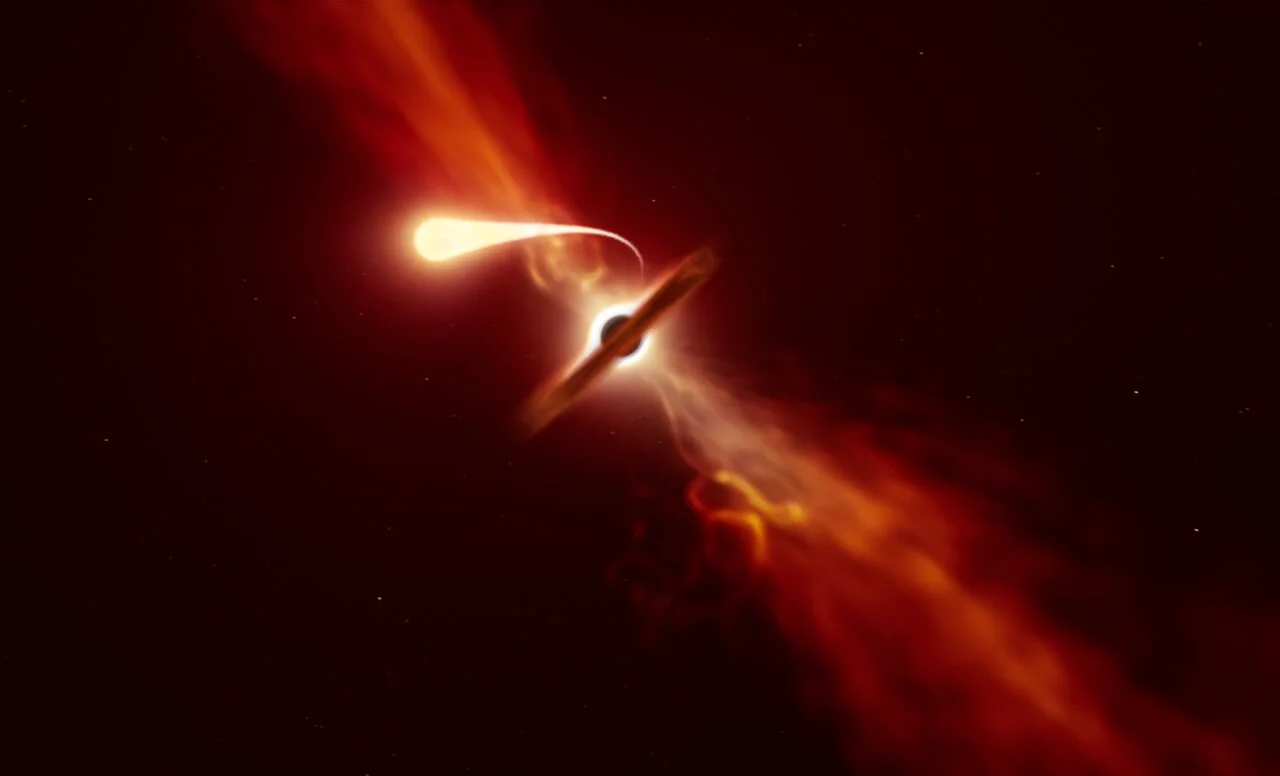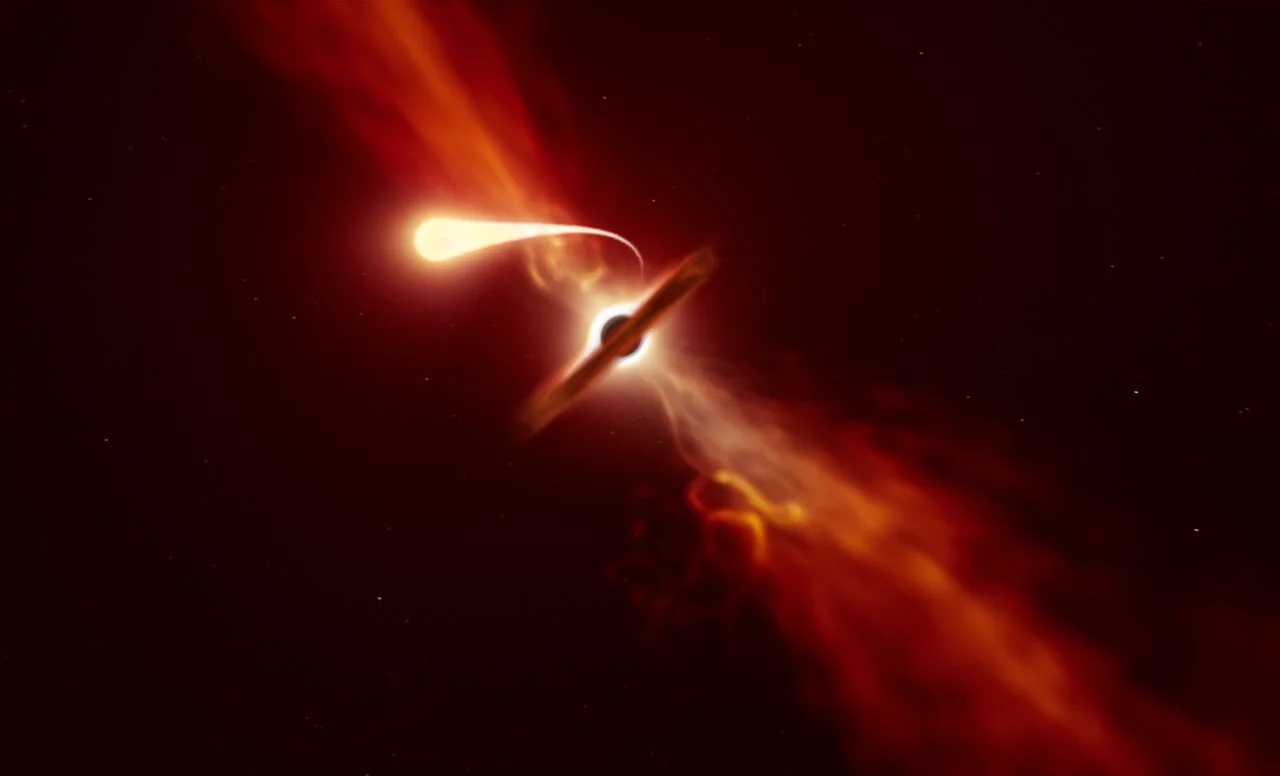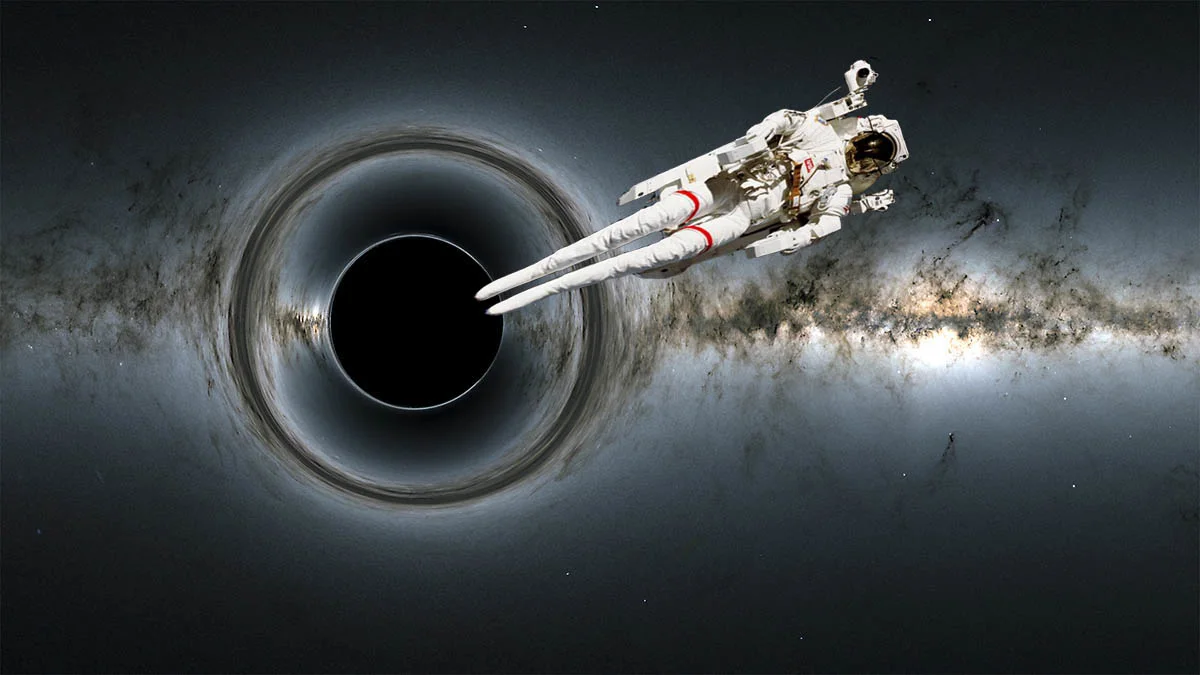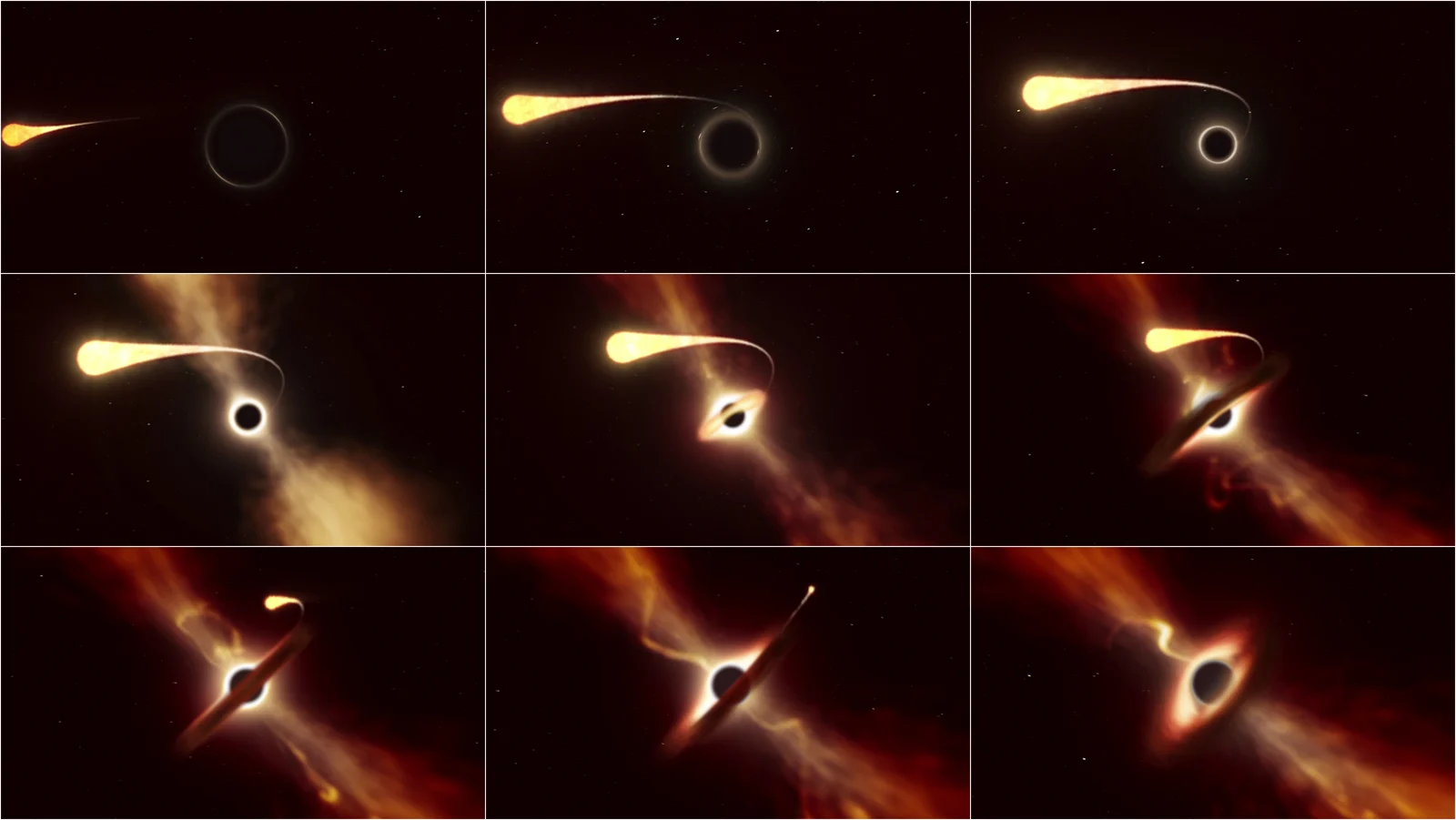
Rare 'Death by Spaghettification' captured as monster black hole shreds a star
Get too close to these cosmic devourers and your fate is sealed.
A team of astronomers captured a distant Sun-like star shredded by a supermassive black hole in a 'death by spaghettification'.
At the core of nearly every galaxy lies a monster. Some lurk in silence, such as Sagittarius A*, the supermassive black hole at the centre of our own Milky Way. Then there are others, like the one hosted by a distant galaxy named 2MASXJ04463790-1013349, 215 million light years away in the constellation of Eridanus. This cosmic devourer just lit up the universe as it messily consumed some unfortunate star, and a team of astronomers here on Earth managed to catch nearly the entire event.
"The idea of a black hole 'sucking in' a nearby star sounds like science fiction. But this is exactly what happens in a tidal disruption event," Matt Nicholl, the University of Birmingham lecturer who led the study of tidal disruption event AT2019qiz, said in a European Southern Observatory (ESO) press release.
"The observations showed that the star had roughly the same mass as our own Sun, and that it lost about half of that to the monster black hole, which is over a million times more massive," Nicholl explained.

Although too distant to image directly, this artist's impression of tidal disruption event AT2019qiz shows an unlucky Sun-like star being shredded by a supermassive black hole's intense gravity. Credit: ESO/M. Kornmesser
Black holes are some of the most extreme objects in our universe. Even the smallest of them pack the mass of several Suns down into just a tiny point in space (known as a singularity). Their gravitational pull is so intense that, up close to them, not even light — the fastest thing in the universe — can escape. Supermassive black holes, which are thought to exist at the core of every large galaxy, contain the mass of at least millions of stars. As a result, their gravity is even more intense. Anything that wanders too close is pulled apart by the extreme forces.
"When an unlucky star wanders too close to a supermassive black hole in the centre of a galaxy, the extreme gravitational pull of the black hole shreds the star into thin streams of material," Thomas Wevers, who currently works as an astronomer with the European Southern Observatory Santiago, Chile, said in an ESO press release. This is because the strength of a black hole's gravitational pull increases dramatically over very short distances.

NASA astronaut Astronaut Bruce McCandless II stands in for Hawking's famous 'spaghettified' subject from A Brief History of Time. Credit: NASA/NASA's Goddard Space Flight Center/Scott Sutherland
In his book, A Brief History of Time, astrophysicist Stephen Hawking described this with the example of an astronaut free-falling, feet-first, towards a black hole's event horizon. As they got closer and the gravitational pull increased, the astronaut's feet would always experience a stronger force than their head. This would cause their body to stretch and get thinner, and the effect would become more pronounced the closer the astronaut was to the event horizon. Hawking called this process 'spaghettification'.
The same thing can happen to any object that gets too close to a black hole, especially a supermassive one.
RELATED: BLACK HOLES JUST GOT A LOT STRANGER, RECENT NASA STUDY FINDS
Over six months in 2019, multiple telescopes gathered the light emitted during AT2019qiz, over various wavelengths, as the event brightened and then faded away. To date, this is the closest tidal disruption event around a supermassive black hole that astronomers have found.
"Several sky surveys discovered emission from the new tidal disruption event very quickly after the star was ripped apart," Weaver said. "We immediately pointed a suite of ground-based and space telescopes in that direction to see how the light was produced."
Also, by catching it so early in the process, the team was able to study the event before it became obscured by the 'mess' a supermassive black hole typically makes during such a stellar meal.
"When a black hole devours a star, it can launch a powerful blast of material outwards that obstructs our view," Samantha Oates, a co-author of the study from the University of Birmingham, said in a university news release. "This happens because the energy released as the black hole eats up stellar material propels the star's debris outwards."

This artist's impression of the star spaghettification shows, from beginning to end, how the tidal disruption is clearly visible to start but is later obscured by debris produced by the event. Credit: ESO/M. Kornmesser
"Because we caught it early, we could actually see the curtain of dust and debris being drawn up as the black hole launched a powerful outflow of material with velocities up to 10,000 km/s," co-author Kate Alexander, NASA Einstein Fellow at Northwestern University, said in the ESO press release. "This unique 'peek behind the curtain' provided the first opportunity to pinpoint the origin of the obscuring material and follow in real time how it engulfs the black hole."
Due to the unprecedented detail they captured during this record-close tidal disruption event, the research team wrote that this "will make AT2019qiz a Rosetta stone for interpreting future TDE observations." Their research paper already compares their observations to previously captured TDEs, noting their similarities and differences. With new surveys in the works and new telescopes being built (such as the ESO's Extremely Large Telescope), more of these events will undoubtedly be captured. With what they have learned here, and what future events will reveal, this will shed more light on the mysteries surrounding supermassive black holes.











